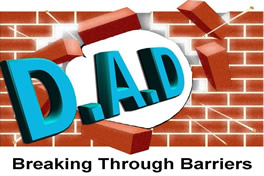
What is Disability?
Disability is NOT caused by a person's impairment of physical or sensory functioning, but by a lack of access to equipment, services, and employment and educational opportunities.
Social Model / Medical Model
Social Model
The Social Model of Disability sees a person's medical condition as only part of the so-called ‘problem’. It argues that most of the day-to-day problems that disabled people face are caused by the fact that society is organised and designed to meet the needs of non-disabled people – people who are classed as ‘normal’. The result is that disabled people are unnecessarily segregated because of a poorly designed built environment (for example: high kerbs, steps, narrow doorways, inaccessible toilets, poor lighting), inaccessible public transport, discriminatory attitudes, and institutional practices in places of education and employment that assume that disabled people ‘can’t do it’.
Medical Model
IIn the Medical Model of Disability, the individual disabled person is seen as the problem. This model views the body as sick, invalid (in-valid) or defective, and therefore in need of a cure. Success in finding a cure or rehabilitating someone is measured by how close they can come to being ‘normal’, for example: it is seen as better, or more ‘normal’, for a person to be able to stand and walk, even if slowly and with difficulty, than to get around more quickly and comfortably using a wheelchair. If it is not possible to achieve a ‘cure’, the medical professional is seen as having failed. The disabled person or ‘patient’ then becomes worthy of charity, which they will accept passively and gratefully.
Medical vs. Social Model
Using the Medical Model, the ‘solution’ to an individual’s disability would be to offer individual, person-centred medical aids or operations which would enable that person to become more ‘normal’.
Using the Social Model not only helps to draw attention to the barriers within society, but also offers solutions which go beyond trying to change the person and to ‘cure’ the individual’s impairment.
How you can support us
As a local organisation we very much rely on the support of our local community. We support over 2,000 people every year to have greater choice and control and remove the barriers that disabled adults and children experience in their everyday lives. But we need YOUR help.